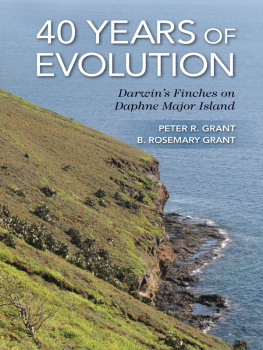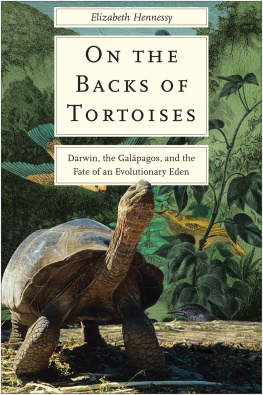Peter R. Grant - 40 Years of Evolution: Darwins Finches on Daphne Major Island
Here you can read online Peter R. Grant - 40 Years of Evolution: Darwins Finches on Daphne Major Island full text of the book (entire story) in english for free. Download pdf and epub, get meaning, cover and reviews about this ebook. year: 2014, publisher: Princeton University Press, genre: Home and family. Description of the work, (preface) as well as reviews are available. Best literature library LitArk.com created for fans of good reading and offers a wide selection of genres:
Romance novel
Science fiction
Adventure
Detective
Science
History
Home and family
Prose
Art
Politics
Computer
Non-fiction
Religion
Business
Children
Humor
Choose a favorite category and find really read worthwhile books. Enjoy immersion in the world of imagination, feel the emotions of the characters or learn something new for yourself, make an fascinating discovery.
- Book:40 Years of Evolution: Darwins Finches on Daphne Major Island
- Author:
- Publisher:Princeton University Press
- Genre:
- Year:2014
- Rating:3 / 5
- Favourites:Add to favourites
- Your mark:
40 Years of Evolution: Darwins Finches on Daphne Major Island: summary, description and annotation
We offer to read an annotation, description, summary or preface (depends on what the author of the book "40 Years of Evolution: Darwins Finches on Daphne Major Island" wrote himself). If you haven't found the necessary information about the book — write in the comments, we will try to find it.
Renowned evolutionary biologists Peter and Rosemary Grant have produced landmark studies of the Galpagos finches first made famous by Charles Darwin. In How and Why Species Multiply, they offered a complete evolutionary history of Darwins finches since their origin almost three million years ago. Now, in their richly illustrated new book, 40 Years of Evolution, the authors turn their attention to events taking place on a contemporary scale. By continuously tracking finch populations over a period of four decades, they uncover the causes and consequences of significant events leading to evolutionary changes in species.
The authors used a vast and unparalleled range of ecological, behavioral, and genetic data--including song recordings, DNA analyses, and feeding and breeding behavior--to measure changes in finch populations on the small island of Daphne Major in the Galpagos archipelago. They find that natural selection happens repeatedly, that finches hybridize and exchange genes rarely, and that they compete for scarce food in times of drought, with the remarkable result that the finch populations today differ significantly in average beak size and shape from those of forty years ago. The authors most spectacular discovery is the initiation and establishment of a new lineage that now behaves as a new species, differing from others in size, song, and other characteristics. The authors emphasize the immeasurable value of continuous long-term studies of natural populations and of critical opportunities for detecting and understanding rare but significant events.
By following the fates of finches for several generations, 40 Years of Evolution offers unparalleled insights into ecological and evolutionary changes in natural environments.
Peter R. Grant: author's other books
Who wrote 40 Years of Evolution: Darwins Finches on Daphne Major Island? Find out the surname, the name of the author of the book and a list of all author's works by series.














